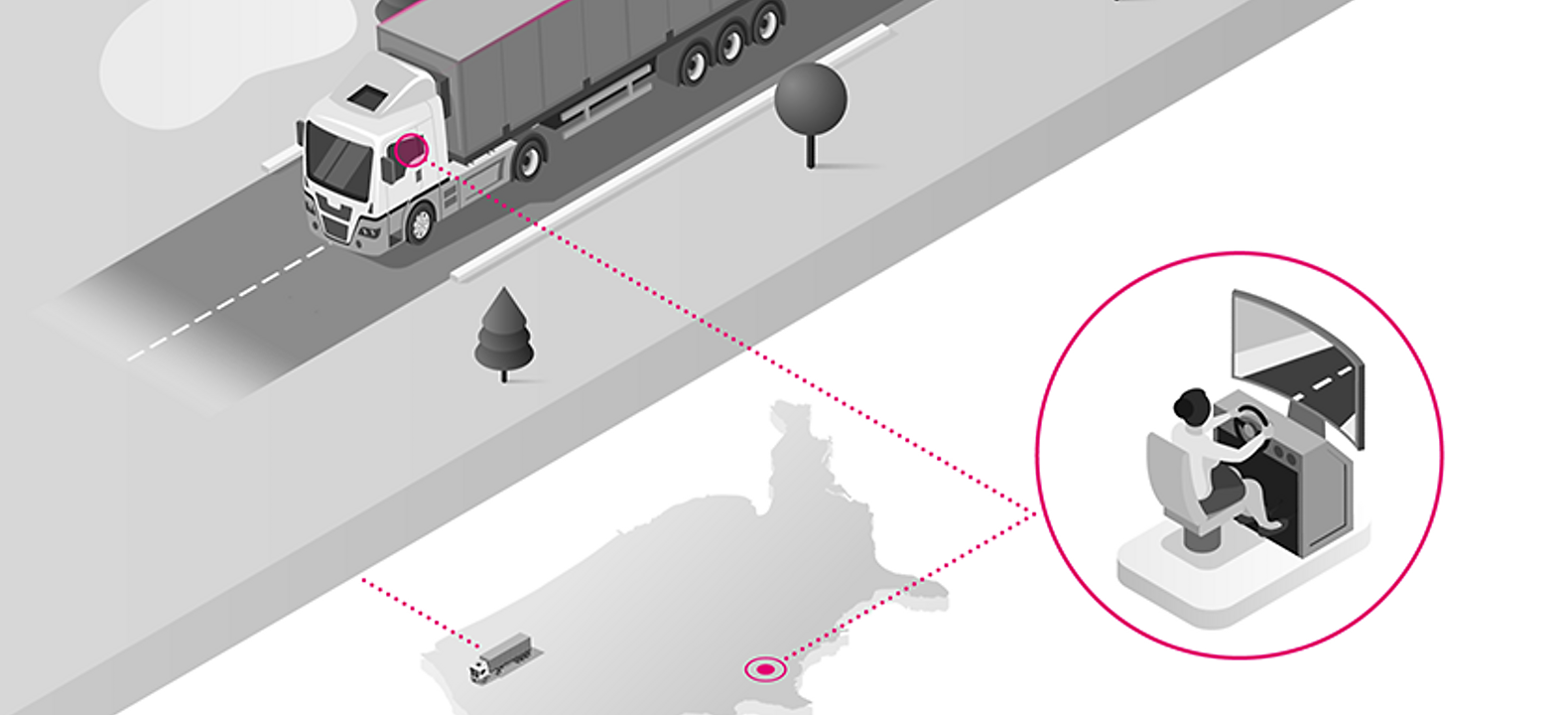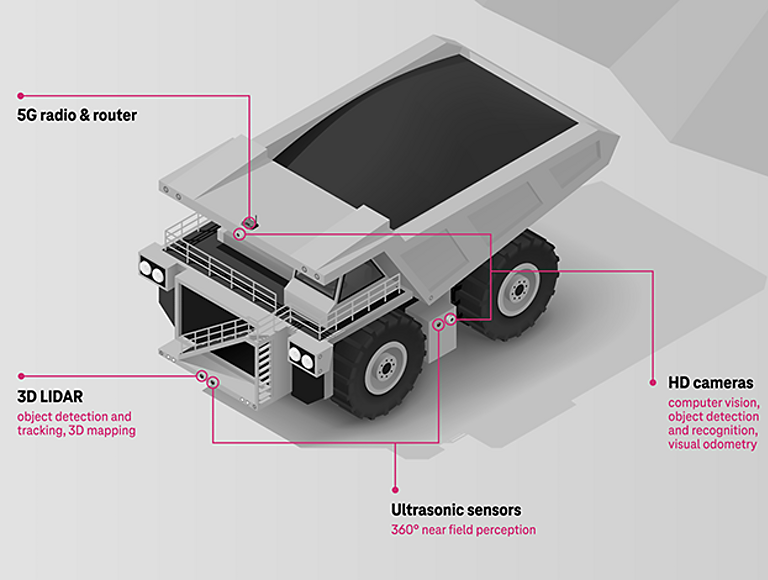
5G can help pave the road to safer, more efficient rural transportation and logistics.
With ongoing supply chain issues and a shortage of long-haul truck drivers, the transportation and logistics (T&L) industry is looking for new ways to solve its business challenges, which include creating safer and more efficient operations.
Nowhere are these challenges more acute than on rural America’s approximately 2.9 million miles of public roads. According to the Department of Transportation, 68 percent of the total lane miles in the United States are in rural areas. And there are nearly nine times as many lane miles per 100,000 residents in rural areas as in urban areas.
The American Trucking Associations reported a shortage of 80,000 truck drivers in 2021, and the industry trade association estimates the shortfall could double by 2030. Improving productivity and driver welfare are important ways to attract these valuable employees—especially beyond cities, where drivers regularly face the demands of long stretches of highways.
5G networks—with their potential for high-speed connectivity, increased bandwidth, improved reliability, and ability to connect hundreds of thousands or even millions of IoT devices—may be an important part of the answer.
Driven by better data.
Almost every step of the supply chain generates valuable data—including the tracking devices on many of the 13 million trucks that operate in the U.S., as well as on the individual pallets or boxes of items that those trucks move. With 5G-enabled solutions, 18-wheelers and their freight can provide increased supply chain visibility.
With 5G-enabled solutions, 18-wheelers and their freight can provide increased supply chain visibility.
Data-driven transportation and logistics optimization opportunities come together at distribution centers, which are often located along interstate highways. With expansive warehouses, multiple loading docks, and automated equipment to load and position freight, these distribution facilities may be ideal locations for 5G private networks or hybrid systems of 5G private and public network services.
Robotics, virtual reality, augmented reality, and other 5G-enabled technologies can help further enhance efficiency at transportation distribution centers, including speed of transfer and container loading.
5G could also spur development of autonomous and remotely-operated trucks—both on the road and at work sites where big vehicles operate—helping to reduce demand for new drivers and ease the hiring challenges faced by T&L companies.
Long-haul carriers can travel even longer with next-generation wireless networking.
T&L companies increasingly use 5G for freight tracking and improved communications as vehicles travel along two-lane highways. And, though still in the early stages, remotely-driven and autonomous trucking are next.
Taking advantage of 5G’s potential for low-latency, remotely-operated trucks could increasingly replace manually driven vehicles, a potential solution to the driver shortage. And autonomous, self-driving trucks could potentially boost fleet productivity and system capacity as well. Working 24/7, day or night, the daily range of a single vehicle might increase from 600 to 1,200 miles with this kind of automation.
Two emerging ways that 5G can support transportation are vehicle-to-network (V2N) connectivity, in which on-the-move vehicles relay signals directly to one another; and vehicle-to-infrastructure (V2I), where trucks communicate with and respond to sensors on bridges, roads, and traffic lights.
Another potential use case for 5G connectivity is platooning—in which trucks travel as a group on rural highways while driver-assist or autonomous technology and vehicle-to-everything (V2X) communications maintain a safe distance between them. In this way, trucks can travel in coordinated, uniformly spaced convoys across long distances to reduce wind drag, fuel consumption, and costs.

5G-powered, sensor-enabled systems can improve efficiency in waste collection.
5G can also be used to support transportation between municipalities and distant operations such as landfills. Today, most of these trucks are manually driven. However, driverless and remotely-operated vehicles used for refuse collection and at landfills could become a regular presence in the years ahead.
Until recently, these industrial, sensor-enabled environments typically ran on large

Connectivity and 5G automation could reduce risks in the mining industry.
Mining can be dirty and dangerous work, with fires, floods, and tunnel collapse among the potential hazards. The health risks include respiratory disease, hearing loss, and heat stress. Introducing autonomous equipment such as robotic loaders and driverless trucks, paired with 5G connectivity, could potentially reduce such risks. For instance, one mining company in Australia is using driverless trucks in its iron mines to improve worker safety and increase operational efficiency.
Besides enabling automation at the mining site, 5G could have a role to play in the transport of mined material to processing plants that may be miles away. Similar to the way that 5G is used for long-haul transportation, both public and private 5G services could be used by dump trucks and mining haul trucks for added safety and efficiency across stretches of rural and sometimes unpaved roads.
5G is key to building more efficient and coordinated transport operations.
The T&L industry is transforming across many miles of farm country, manufacturing plants, and other rural business operations. That includes landfills, mines, and other heavy-equipment sites that are not always visible from major metropolitan areas but provide vital products and services.
In the process, transportation distribution centers—the logistical hubs for so much long-haul freight—are being automated in new ways for speed and efficiency.
5G is helping turn the data generated by 18-wheelers, warehouses, and tagged freight into real-time information and actionable insights. In addition to providing a better, safer experience for drivers, all of that timely data can enable T&L operators to choose better routes and provide tighter delivery windows.
5G: Capable device required; coverage not available in some areas. Some uses may require certain plan or feature; see